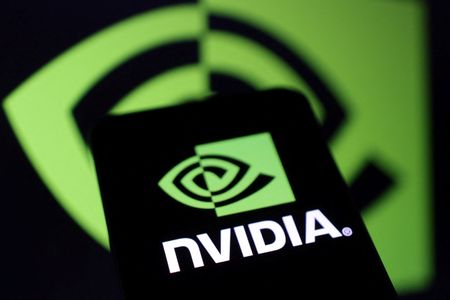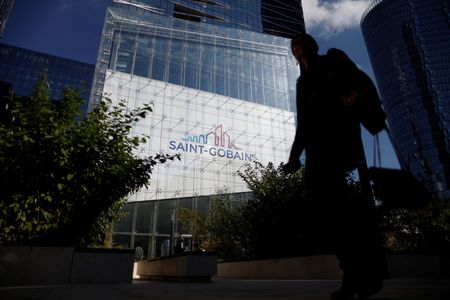(Reuters) – Nvidia’s upbeat quarterly forecast signaled that the AI boom is not over, but it failed to bring buyers back into the “Magnificent Seven” stocks that have dipped in the last three months.
The stock lost about 4% to $125.81 in choppy trading, and other members of the group such as Microsoft and were lower on Thursday after Nvidia’s earnings failed to inspire the kind of gains that became a hallmark of the AI rally through 2023 and 2024.
Nvidia is viewed as a barometer of the health of AI spending and the two-year boom propelled its valuation to more than $3 trillion. Investors were hoping its results would restart a rally that has sputtered following the “Magnificent Seven” stocks’ peaks in late 2024.
In recent weeks, Chinese startup DeepSeek’s low-cost AI model had fanned investor skepticism over the billions of dollars earmarked by Big Tech for AI infrastructure, with many of the stocks still struggling to recoup the losses.
Fears of a pullback in spending on Nvidia’s priciest AI chips vaporized more than half a trillion dollars of its stock-market value in a single day last month, a record on Wall Street.
And more recently, an analyst report that Microsoft had cut back on data-center leases reignited concerns over tech companies’ spending.
Nvidia’s report was eyed as a bellwether for chip spending on generative AI – and it indicated demand remains strong, though its margin outlook ebbed from previous quarters.
Nvidia’s “datapoints are very positive for the wider AI ecosystem,” said Ivana Delevska, chief investment officer of Spear Invest, which holds Nvidia shares in an actively managed exchange-traded fund.
CEO Jensen Huang on Wednesday said demand for its latest Blackwell chip was “amazing” and that it had already pulled in around $11 billion in revenue related to the processor in the fourth quarter.
The world’s second-most valuable company has been the top beneficiary of an AI-driven spending spree over the past two years, with its shares gaining more than 400% in that period.
Nvidia expects total revenue of $43 billion, plus or minus 2% for the first quarter, compared with analysts’ average estimate of $41.78 billion, according to LSEG.
The massive revenue surges and beats that had become synonymous with Nvidia, however, are becoming a thing of the past.
The company’s January-quarter revenue of $39.33 billion beat estimates by a margin of 3.4%, compared with a beat of more than 7% in the year-ago period.
Nvidia also expects its margin to dip in the current quarter to 71% from 73.5% as it ramps up Blackwell production, though finance chief Colette Kress said the company would return to the mid-70% gross margin range later in the fiscal year.
Of the 63 analysts covering the stock, 33 have a “strong buy” rating, as per LSEG data. The median price target stood at $175, implying that analysts expect a 33% increase from the stock’s Wednesday close.
Nvidia shares recently traded at about 29 times their forward earnings, down from more than 80 two years ago, as rising earnings pull down the premium at which the stock trades. Rival Advanced Micro Devices trades at about 22 times its forward earnings.
“At around 30x forward earnings the valuation still doesn’t look overcooked,” said Derren Nathan, head of equity research at Hargreaves Lansdown.
(Reporting by Alun John in London, Joel Jose, Sruthi Shankar and Arsheeya Bajwa in Bengaluru; Editing by Amanda Cooper, Saumyadeb Chakrabarty and Sriraj Kalluvila)










